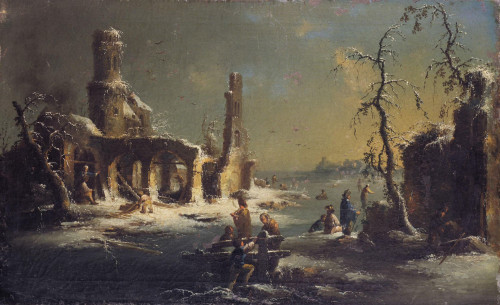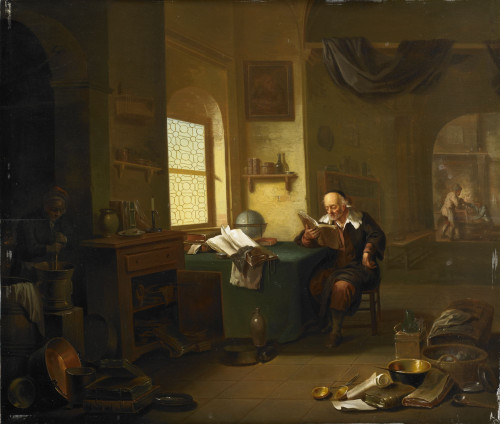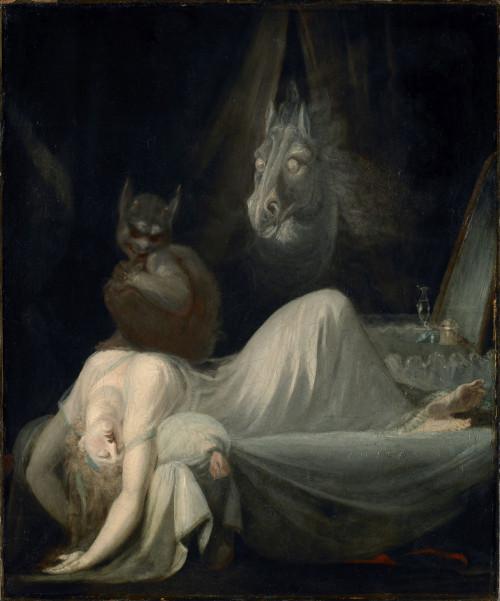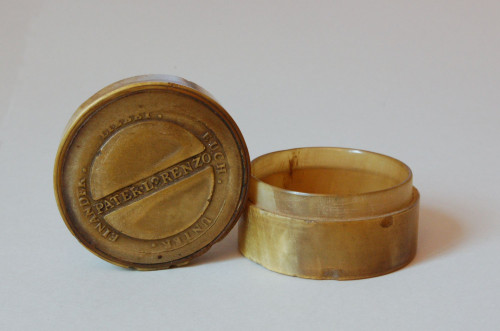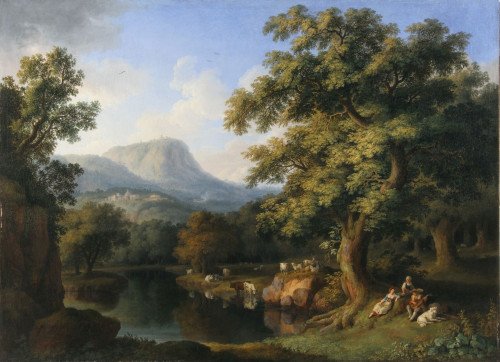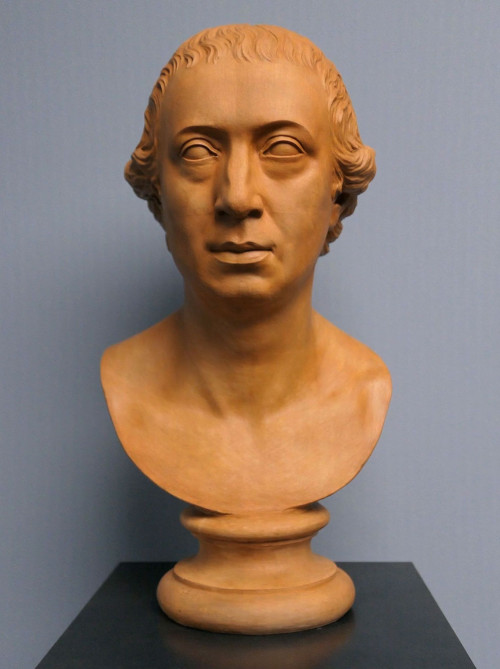Johann Wolfgang Goethe was born in 1749 on Großer Hirschgraben in Frankfurt. In Germany he is seen primarily as a representative of Sturm und Drang and Classicism, but in the rest of Europe he is considered the most important German-speaking exponent of Romanticism. From his childhood on, the visual arts were also an important part of the poet’s life and here, too, his horizon was broad: For Goethe, the “sun-like” eye, seeing and beholding, were fundamental categories for apprehending the world, colour and light were objects of his scientific research. He was a draftsman and art collector, occupied himself ― not least by travelling to Italy ― with classical antiquity, the Renaissance, and Classicism and sought to influence contemporary art with the Weimarer Kunstfreunde (Weimar Friends of Art).
Since its founding in 1859 the Freies Deutsches Hochstift has been collecting art. The painting collection was assembled with special reference to Goethe and his time and thus concentrates on the period from the mid-18th to the mid-19th centuries. At the German Romantic Museum, the Goethe Gallery forms the transition between the house of Goethe’s birth and the Romanticism exhibition. It traces the arc from 18th-century works from the region of Frankfurt, as Goethe came to know in his parental home, up to the 19th century. It gathers, among others, works by the eccentric Swiss artist Henry Fuseli, portraits by Anton Graff, who gave the age a new face, views of Italy by Johann Philipp Hackert, and portraits by Angelica Kauffmann. Works by Caspar David Friedrich, Carl Gustav Carus, Carl Blechen, and Johan Christian Clausen Dahl, painters of the Romantic period with whom Goethe was closely involved, can be seen in the painting cabinet in the Romanticism exhibition on the third floor.
The collection thus presents not only Goethe’s own preferences and knowledge of the art of his time, not only portraits of the poet and his milieu and paintings that deal with his work. Instead, it offers a concentrated view into 100 years of art history and shows the continuities and ruptures that characterised the arts at the birth of a new epoch around 1800 and thus at the beginning of the modern age.
